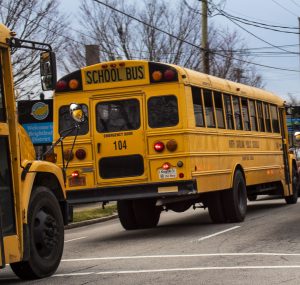The payroll chaos that has embroiled Durham Public Schools has been blamed on various things, including calculation errors by the former CFO and communication failures throughout the fiscal year. Now an outside comptroller says mistakes began even earlier, more than a year ago.
The comptroller found fundamental flaws in a study conducted by HIL Consultants that was the basis for calculating staff raises. The comptroller’s presentation, which is on the agenda for tonight’s meeting of the school board, says the raises recommended by the study were never within DPS’ budget.
“The result was inevitable,” reads the presentation by Kerry Crutchfield, whom the boarrd hired as an independent consultant earlier this month. “The cost of the implementation plan was not suitable within the current DPS budget.”
The presentation sheds new light on exactly how the confusion about DPS pay began.
The DPS pay dispute erupted last month when DPS notified 1,300 classified workers that raises they were given in October were being revoked. The announcement rattled classified workers — nurses, cafeteria workers, instructional assistants, maintenance staff and others — and led to widespread protests and school closures.
The school board has scrambled to explain the pay discrepancy since then, and issued a preliminary report by the Tharrington Smith law firm earlier this month. The report stated that the raises would put the district $9 million over budget, and blamed the pay confusion on miscalculations and poor communication.
According to the comptroller’s presentation, though, the mistakes began in fall of 2022, when former DPS superintendent Pascal Mubenga engaged HIL Consultants to complete a salary study in hopes of bringing DPS’ lowest-paid employees up to market rate.
That study was completed in January 2023 and presented to the school board by Hank Hurd and Frank R. Lopes of the HIL group. Hurd, one of the group’s founding partners, served as DPS’ Chief Operating Officer and later superintendent in 2009. Hurd and Lopes recommended raises that totaled $10.8 million, a figure they described as a “rough” number based on “first perusal.”
Then in February 2023, then-CFO Paul LeSieur learned that the raises could cost substantially more — as much as $21 million — depending on how the district measured workers’ prior experience. The CFO nevertheless continued to use the lower $10.8 million figure in communications with the superintendent and the board. The CFO informed the superintendent of the budget shortfall in November 2023. The school board was not informed until January 2024.
But LeSieur’s miscalculations and lack of clear communication were not the sole causes of the chaos that followed, the comptroller’s presentation suggests.
Despite providing “excellent data on market-based pay in the Durham area,” the HIL study recommended unaffordable raises, the presentation says. The cost of implementing the raises would not have been feasible using either the $10.8 million or $21 million figure, it states.
In a response to Crutchfield’s report, the HIL group blamed that error on DPS leadership, saying “district leadership confirmed in writing our estimate of $10.8 million was within DPS’ budget for the 2024 fiscal year.”
Before the salary study, classified pay levels increased by increments, or “steps,” of 0.85%. The HIL study increased those step increments to 1.5%. That difference, the comptroller says, is like “trying to force a square peg into a round hole.”
Though the DPS raises were intended to bring workers’ pay up to market rate, the effects were uneven. Some with more than 20 years of experience received pay increases between 25% and 35%, putting their salaries above market rate, the presentation states.
In its response, the HIL group defended the larger increments that its study recommended, saying the steps were within pay ranges approved by the state and were in line with those of other districts.
The comptroller’s report also critiques the timing of the implementation. Employees were given raises in October, with the school year already underway. By that point, the numbers in the study were already outdated.
In a statement, the HIL group noted that it was not contracted to implement the study, and that implementation was instead left up to the school district.
Moving forward, the comptroller recommends that the board implement an 11% pay raise for all classified workers through the end of the fiscal year in June, in order to stay within budget.
He also recommended that the school system establish next school year’s pay rates as soon as possible, and that employees be notified of new pay amounts before the end of this school year.
The school board is set to vote tonight on pay rates for the remainder of the year.
Editor’s note: This story has been updated to incorporate the HIL group’s responses following the comptroller’s presentation.



